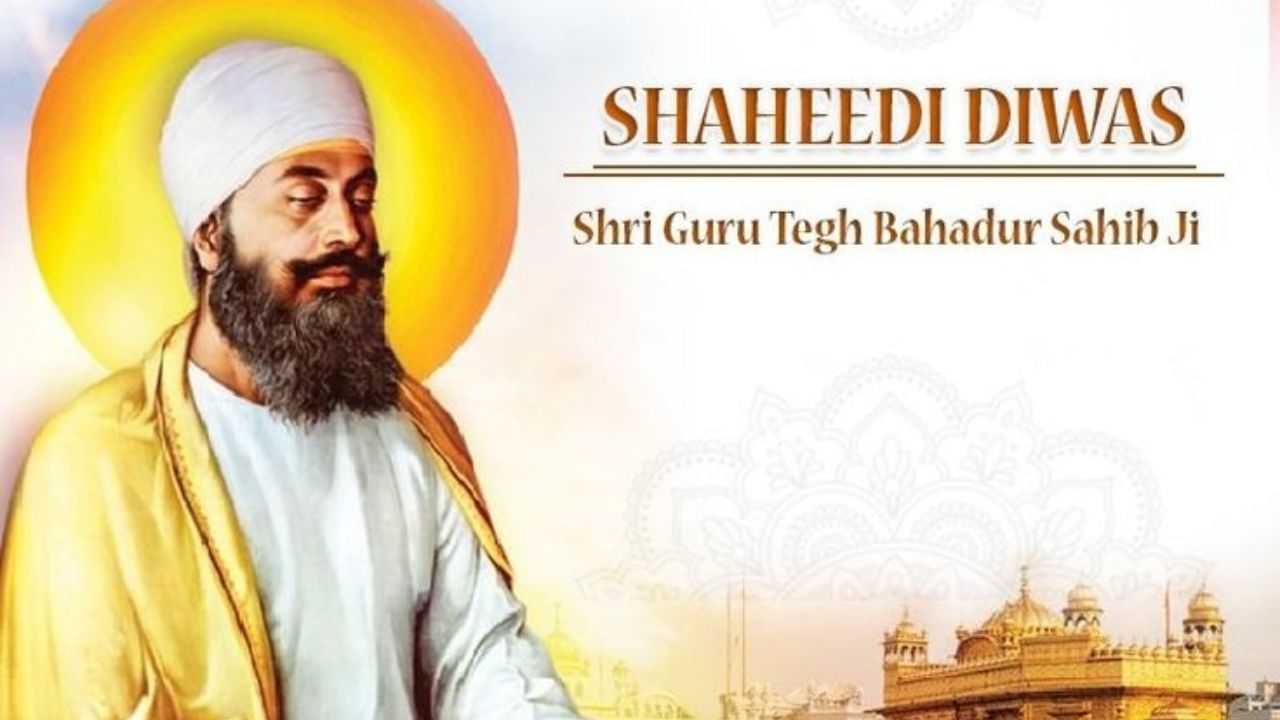New Delhi: Guru Tegh Bahadur, the ninth Guru of Sikhism, stands as one of the most powerful symbols of courage, change, strength and compassion for human rights. He is one of the most powerful figures for humans who fought against many injustices and brought a positive change in society. His life reminds us of the spiritual strength and how he fought without the fear of being killed to be true and make a change in society.
As India marks 350 years in 2025 to celebrate the Martydom of Guru Tegh Bahadur Sahib Ji, it is not only a day to remember the dark moments but to celebrate the lifetime he spent in helping the oppressed, uplifitng the marganlised and protecting the freedom of various religions and teaching them the correct path scuh as Hindus, Muslims, Sikhs and beyond without any discrimination.
Who was Guru Tegh Bahadur?
Born on April 1, 1621, in Amritsar, Punjab, to Guru Hargobind Singh Sahib and Mata Nanaki, Guru Tegh Bahadur was named Tyag Mal, meaning someone who has mastered renunciation. He later earned the name ‘Tegh Bahadur’, after his brave acts of the sword on the battlefield.
Being the son of Hargobind Singh ji, he was born in a
spiritual environment, which helped him master the art of meditation and warrior discipline, which he later used to serve justice and help people in need. Guru Tegh Bahadur officially became the ninth Guru of Sikhism in 1664, for his bravery and relentless attitude towards society, for equality, compassion and devotion.
He travelled extensively across Northern and Eastern India – Punjab, Haryana, Uttar Pradesh, Bihar, Bengal and Assam and helped the people by spreading positive messages, peace and moral strength where needed.
How Guru Tegh Bahadur helped people
One of the most defining moments of Guru Tegh Bahadur’s life came when Kashmiri Pandits approached him in 1675. They were facing intense pressure under Mughal rule to convert to Islam. No king, ruler, or warrior stood up for them—only Guru Tegh Bahadur offered help.
India in the 1600s was socially divided by caste lines, regional identities, and religious boundaries. Guru Tegh Bahadur made it his mission to break these walls.
During the 17th century, India witnessed growing friction between various religious groups. Guru Tegh Bahadur actively worked to prevent communal violence.
By standing against the forced conversions, he not only chose death over freedom but stood as an example to help selflessly without the fear of who you are supporting, but helping the right.
In 1675, Kashmiri Pandits approached Guru Tegh Bahadur seeking protection and help for forced conversions under the Mughal rule. He decided to defend the rights of people to follow any religion freely.
For which he travelled to Delhi, where he was arrested and tortured for refusing to convert. Later was brutally martyred for refusing.
On November 11, 1675, Guru Tegh Bahadur was executed in Chandni Chowk. He sacrificed his own life to help others and so they could live freely by following any religion, which made him immortalised as ‘Hind Di Chadar’.
